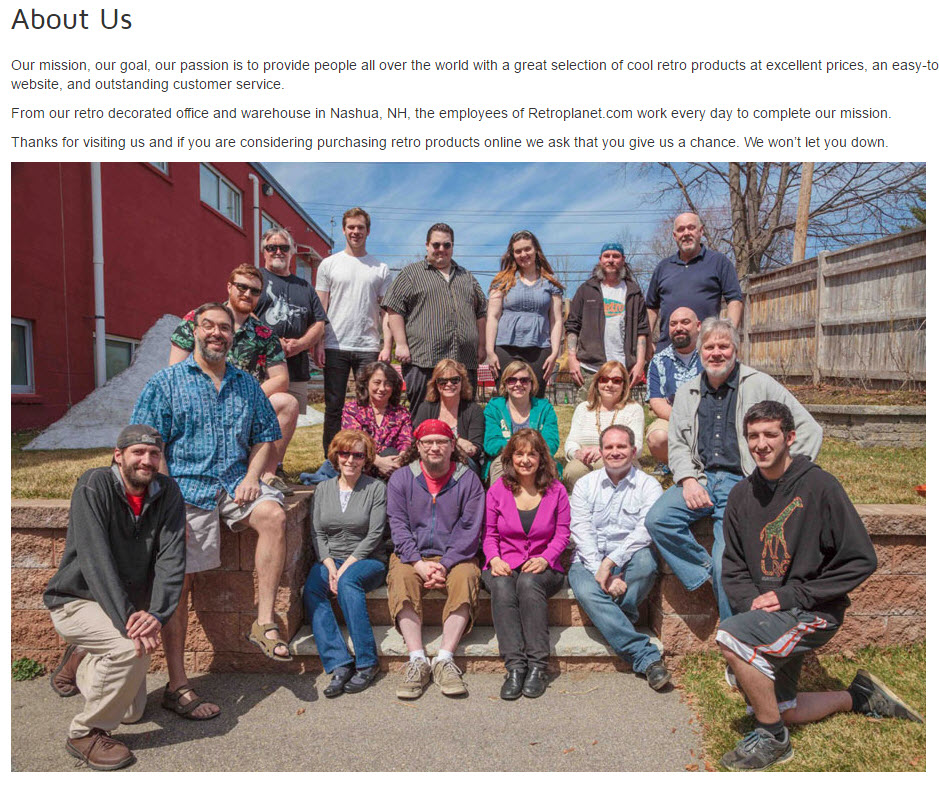The percentage of people navigating sites via mobile devices continues to climb — some sites are as high as 75 percent. That means fast-loading images and descriptive video, among other elements, are more important than ever.
Here are five ways to engage mobile (and desktop) visitors and ultimately get them to click that call to action.
5 Ways to Engage Web Visitors
1. Use text in video. In a recent report by Digiday, 85 percent of video played on Facebook is done with the sound off. We can attribute some of that to auto play, which registers a view even if the user scrolls past the video.
That could easily be counteracted, though, by those who watch videos in noisy environments (and thus can’t hear them). It brings up an important point: If you want to tell a story, show more than just moving pictures and voiceovers. You need to accommodate the hearing impaired, the people watching your message at work, and those who forgot their headphones.
2. Grab visitors within eight seconds. Whether via a landing page, stellar imagery, product names and descriptions, or video, you have less than 10 seconds to keep someone on a page. This is why so many service sites use large, grabbing graphics with minimal text, inviting users to scroll down. That doesn’t always work as well for ecommerce sites, but the rule still applies: You must engage right out of the gate.

Show products in context for decor and related merchandise. It helps grab attention because it helps the shopper envision how it would look in her own home. (Source: RetroPlanet.com)
—

Is there a single feature that appeals to the masses? For HAAN, it’s being chemical free. The site tells you this immediately, and entices people to spend time learning about HAAN products.
—

On categories, use header graphics when you need to show how a product line performs. In this case, it’s how the slip-ons look on feet. (Source: Blukicks.com.)
—

Savvy camera shoppers know what they want. B&H Photo lists the most attractive features using easy-to-read bullet points.
3. Optimize for larger displays. With so many people accessing the web via smartphone, it’s easy to forget those using large-format tablets and desktop computers. What looks good on a smartphone doesn’t always work for larger screens. So be sure you’re not compressing images (to save bandwidth) to the point they look bad on bigger devices. Keep in mind that many smartphone shoppers will zoom images to see details.
Be careful when using filters and image editing tools on smartphones, too. Those brushed-up photos may look good on an iPhone, but horribly touched on larger screens.
4. Tell visitors who you are. People like knowing who they’re supporting. An “about us” page is especially important for smaller ecommerce business because it lets shoppers know they’re buying from real people. When telling your story, use your own voice. The design of the page is just as important as the story itself, so use compelling images and headlines.

Anyone know what a humuhumunukunukuapua’a is? You can’t dispute that the intro to Blu Kicks’ about-us page grabs the reader immediately.
And never underestimate the power of showing your entire staff. It can go a long way into sending a simple message: “When you buy from us, you are supporting all these people.”

RetroPlanet.com’s about page sends a key message with a single picture – twenty people, plus their families, are supported by its customers.
5. Include visitors as much as possible. It’s one thing to tell a story. It’s another to include the visitor in the process. To do this, you need to invite shoppers to give feedback, and ask and answer questions. Theses are the things that turn a typical online store into a community, and community-style stores most always sell more.

Kohls.com features a Q&A for each product. Questions are answered by the community, as well as by manufacturers and Kohl’s staff. For shopping carts that don’t have this feature, consider implementing a simple commenting tool, such as Disqus.
—

Squishable.com invites others to submit ideas and lets visitors vote on which products get produced. This also helps people get more excited about upcoming releases.
Other ways to include visitors is to wrap up blog posts and articles by asking questions, including feedback links on product pages, and implementing online chat and easy-to-use email contact forms.
Ready to Implement? Target Your Audience
Before implementing changes, know your target audiences. There is no one size fits all when it comes to creating and displaying content. There are, however, a few rules that fit just about every type of business.
- Keep introductory videos short. Shorter videos get more complete views and more shares across the web. Reserve longer videos for intermediate research instead of the primary means of grabbing one’s attention.
- Consider different video loads based on device. Mobile visitors tend to have a longer attention span than those browsing via desktop. So if you’ve created a video to fully describe a product’s features, consider exporting two different versions: a shorter one for desktop viewing, and a longer version for smartphones and tablets.
- A responsive website does the image scaling for you. If you’re concerned that using larger dimensions for images will force scrolling on smartphones, a responsive design solves that problem. If you are not able to load varying image size sets, going big is the better option.
- Every business has an interesting story. Find the best way to tell your company’s story and people will learn it and, in turn, start remembering who you are.





